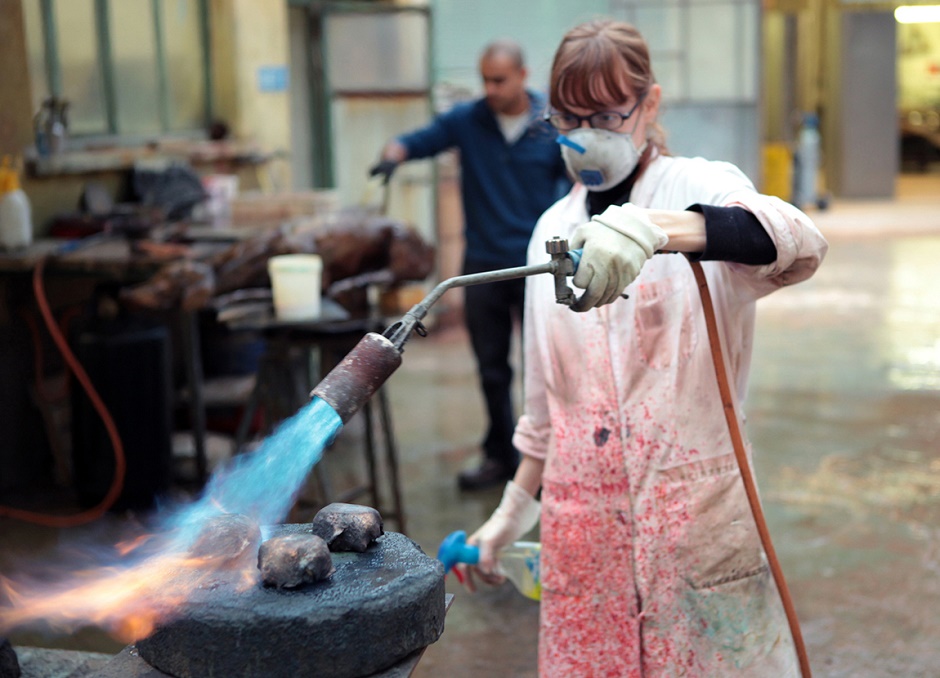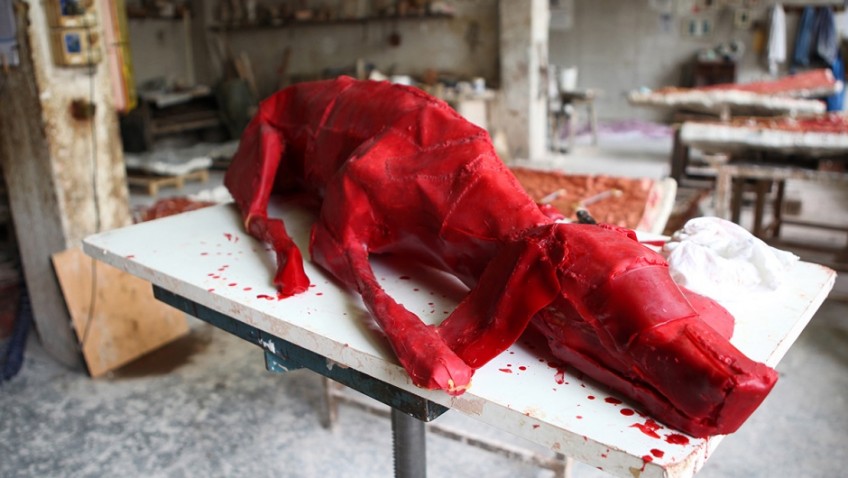Joyce Glasser reviews Hand Gestures
Hand Gestures, Francesco Clerici’s virtually narration and dialogue-free documentary about the Battaglia Artistic Foundry in Milan, will be of interest to sculpture lovers, art historians and any museum visitor who has repeatedly failed to understand the ‘lost wax method’ described in various sculpture exhibits. There is something appealingly visceral and even carnal in the noisy slopping of the clay mixture onto the cast, the hand moulding and the continual mixing of dry and liquid material like huge quantities of cake batter. In keeping with tradition, Clerici doggedly aims to show and not tell, but the process is not self-evident, and more explanation would have been helpful in understanding what, exactly, we are watching.
 The Foundry has been making bronzes since 1913, based on the fifth century BC Riace bronzes. Their ‘lost wax method’, we are told in captions, is not taught in schools but passed down by those working in the factory, famous now for the company’s dog sculptures, which may, or may not, be to your taste.
The Foundry has been making bronzes since 1913, based on the fifth century BC Riace bronzes. Their ‘lost wax method’, we are told in captions, is not taught in schools but passed down by those working in the factory, famous now for the company’s dog sculptures, which may, or may not, be to your taste.
Clerici occasionally cuts to archive footage of the Foundry in the 1960s when they were working on huge, grandiose public art-type sculptures, in contrast to the dog which resembles an unfortunate attempt to emulate Alberto Giacometti’s famous 1951 bronze ‘ dog, now at the MoMA.
Artist Velasco Vitali is one of several craftsmen who man-handle the dog, first seen lying down covered in hot red wax, and then suffocated with a clay compound that is then stabbed with nails and held together for casting with Lego-like rods, the purpose of which is not explained. Eventually the ‘dog’ is completely covered, like an Egyptian mummy, in the plaster-like material when what looks like molten wax is poured into the top until it fills the cavity.
We see the moulds being mixed but never learn what materials are being used or why. In any event, the cylindrical shaped mummy is subjected to a fiery kiln and, eventually, the mould is hacked open like a piñata at a Mexican birthday party, revealing the bronze dog, minus the legs that have to be welded back on. The sculpture still has to undergo a series of brushing and cleaning processes, none of which is explained.
The film ends with the finished, surprisingly hollow, bronze dog being transported to a gallery or warehouse where it joins other models.
Fortunately, an art historian in the audience was discussing the film with a few people after the screening. Rather than answering questions thrown at her, however, she had some of her own. She thought it curious that so much clay had been used around a hollow sculpture and that certain stages, such as the actual ‘losing wax’ in the process, had been omitted.




